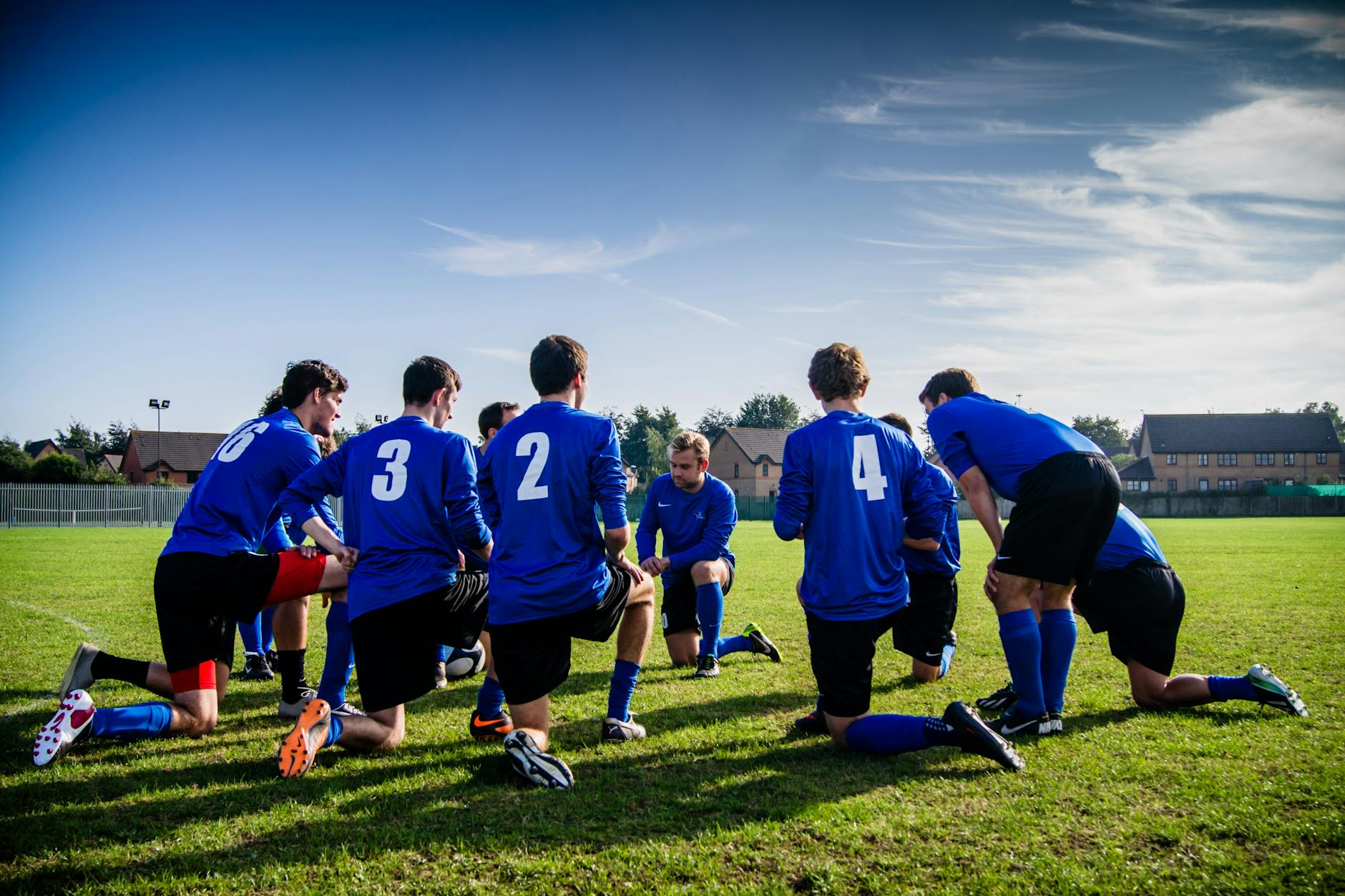
Top Outdoor Games That Build Family Connection
In a world dominated by screens and digital distractions, families are increasingly disconnected despite living under the same roof. What happened to those carefree days of outdoor play and genuine laughter? The solution might be simpler than you think: outdoor family games. These activities don’t just get everyone moving—they create powerful bonds through shared experiences, teamwork, and unplugged fun that no video game or social media platform can replicate.
Imagine your children’s faces lit with excitement instead of the blue glow of devices. Picture yourself connecting with your spouse through friendly competition rather than parallel scrolling on your phones. Outdoor games provide this magical transformation, offering stress relief for adults and creative development for kids without expensive equipment or elaborate setups. From classic games like Hide and Seek to DIY creations like backyard obstacle courses, these activities prove that meaningful family memories don’t require a big budget—just a little imagination and the great outdoors.
In this guide, we’ll explore everything from timeless classics to creative DIY alternatives, nature-based adventures that double as learning experiences, team sports that foster cooperation, and practical tips to ensure your outdoor game sessions are successful for family members of all ages. Ready to transform your family dynamics through the simple power of play? Let’s begin!
Benefits of Outdoor Family Games

Benefits of Outdoor Family Games
Breaking away from screen time
Outdoor family games provide an essential break from the digital distractions that dominate our daily lives. When families step outside to play together, they leave behind screens that often create barriers to meaningful communication. This dedicated time without technological interruptions allows family members to be fully present with each other, fostering deeper connections and more authentic interactions.
Promoting physical activity and health
Engaging in outdoor games naturally encourages physical movement, whether through playing catch, running relay races, or exploring nature trails. These activities contribute to improved physical health for family members of all ages. Regular outdoor play helps establish healthy habits that can last a lifetime, counteracting the sedentary lifestyle that many families struggle with in today’s world.
Strengthening family bonds through teamwork
Outdoor activities create unique opportunities for families to work together toward common goals. Whether collaborating to build a fort, competing in friendly team competitions, or solving outdoor challenges, these experiences build trust and emotional connections between family members. The natural cooperation required in many outdoor games helps family members understand each other’s strengths and learn to support one another more effectively.
Reducing stress and improving mental well-being
The combination of fresh air, natural surroundings, and physical activity works wonders for mental health. Outdoor family games provide a much-needed escape from the pressures of work, school, and everyday responsibilities. The natural setting promotes relaxation and openness, allowing family members to release tension and experience joy together. These positive emotional experiences contribute significantly to overall family well-being.
Fostering creativity in children
Outdoor environments offer endless possibilities for imaginative play and creative thinking. Without the constraints of indoor spaces or pre-programmed entertainment, children naturally develop their problem-solving abilities and creative expression. Parents often notice that their children demonstrate remarkable ingenuity when playing outdoors, creating games from simple objects or incorporating natural elements into their play.
Now that we’ve explored the many benefits that outdoor family games bring to both individual family members and the family unit as a whole, let’s look at some specific games you can try. In the next section, “Classic Outdoor Games for All Ages,” we’ll discover timeless activities that have brought families together for generations and continue to provide endless entertainment without requiring expensive equipment or elaborate setups.
Classic Outdoor Games for All Ages

Classic Outdoor Games for All Ages
Now that we understand the benefits of outdoor family games for building connections, let’s explore some timeless classics that appeal to family members of all generations. These games require minimal equipment but deliver maximum enjoyment, making them perfect for spontaneous family gatherings.
Hide and Seek Variations
The traditional game of hide and seek never goes out of style. For younger children, consider limiting the playing area to make it less intimidating. For older family members, add challenges like hiding in plain sight or creating “safe zones.” You can also try “Sardines,” where one person hides and everyone else seeks, with each finder joining the hidden person until only one seeker remains.
Tag Games That Everyone Can Enjoy
Tag offers endless possibilities for family fun. Try “Freeze Tag” where tagged players must remain frozen until another player frees them. “Pool Noodle Tag” adds a twist by using soft pool noodles as taggers instead of hands, making it gentler for all ages. Another exciting variation is “Color by Corner” where players race to designated colored corners when called, with those in the wrong corner being eliminated.
Basketball and Other Ball Games
Family basketball can be adapted with adjustable hoop heights for different age groups. For something different, try “500” – a football game where players earn points based on whether they catch thrown balls “alive” (in the air) or “dead” (after bouncing). Kickball and volleyball are excellent options for larger family gatherings, promoting teamwork while accommodating various skill levels.
Frisbee Golf and Disc Activities
Transform your backyard into a frisbee golf course by designating trees, posts, or homemade targets as “holes.” Players take turns throwing their discs, trying to reach each target in the fewest throws possible. Beyond frisbee golf, simple disc tossing in a circle provides an accessible activity that even young children can enjoy, while more experienced players can showcase trick throws.
Marco Polo and Active Water Games
Water games add refreshing fun to hot days. “Marco Polo” remains a favorite with its simple premise – the “Marco” player, with eyes closed, calls “Marco,” while others respond “Polo” as they try to avoid being tagged. Other water activities include splash contests, water balloon tosses, and pool obstacle courses that encourage active play while keeping everyone cool.
With these classic outdoor games in your family activity arsenal, you’ll always have engaging options for quality time together. Up next, we’ll explore how to create your own DIY games that won’t break the budget, turning ordinary household items into extraordinary entertainment.
Creative DIY Games That Won’t Break the Budget

Creative DIY Games That Won’t Break the Budget
Now that we’ve explored classic outdoor games that bring families together, let’s look at budget-friendly DIY options that offer just as much fun without the expense. These creative activities can be assembled using materials you likely already have at home.
Backyard Obstacle Courses
Transform your yard into an adventure zone with homemade obstacle courses that challenge family members of all ages. Create a Ninja Warrior-style course using pool noodles, hula hoops, and other household items. Set up tunnels to crawl through, balance beams made from boards, and jumping stations. These courses not only provide physical activity but also allow for customization based on your family’s skill levels and available space.
Water Balloon Toss and Activities
On hot days, water games offer refreshing entertainment. Organize a water balloon toss where partners gradually step farther apart after each successful catch. For more creative play, try piñata water balloons hung from tree branches that burst with cooling relief when hit. Squirt gun races add another dimension of watery fun, where family members can compete to fill containers or hit targets using just water power.
Homemade Hopscotch and Four Square
Create a rainbow hopscotch pattern using sidewalk chalk for a colorful twist on this classic game. Design various layouts beyond the traditional pattern to keep the game fresh and exciting. Similarly, a four square court needs just chalk and a playground ball, providing hours of competitive fun while improving coordination and reflexes.
DIY Giant Jenga and Lawn Games
Oversized versions of familiar games create memorable outdoor experiences. Build a giant Jenga set using 2×4 lumber cut into equal blocks. When stacked, this towering game tests both steady hands and strategic thinking. Other DIY lawn games include giant checkerboards painted on canvas, outdoor tic-tac-toe using painted rocks, and Yardzee (an oversized version of Yahtzee) played with large wooden dice.
Hula Hoop Contests and Challenges
Hula hoops offer endless possibilities beyond the standard waist-spinning contest. Create relay races where family members must pass through hoops in creative ways. Set up hoop targets for throwing contests or design an obstacle course where participants navigate while keeping their hoops spinning. For added fun, establish different challenges for various age groups to ensure everyone can participate successfully.
With these DIY games in your family activity arsenal, you’ll create lasting memories without straining your budget. Next, we’ll explore Nature-Based Activities for Exploration and Learning, where we’ll discover how the natural environment can provide both entertainment and educational opportunities for the whole family.
Nature-Based Activities for Exploration and Learning

Nature-Based Activities for Exploration and Learning
Now that we’ve explored budget-friendly DIY games, let’s venture into activities that connect families with the natural world around them. Nature-based activities provide excellent opportunities for both bonding and learning without requiring expensive equipment.
Geocaching Adventures
Geocaching transforms ordinary walks into exciting treasure hunts that the whole family can enjoy. This activity doesn’t require specialized equipment—just a smartphone with GPS capabilities. Families can search for hidden containers (geocaches) using coordinates and clues, making exploration a collaborative adventure. Unlike some structured activities, geocaching is flexible—you’re not required to complete a certain number of finds or follow a rigid schedule, making it perfect for families with varying energy levels and time constraints.
Nature Walk Bingo
Turn a simple stroll into an engaging game with Nature Walk Bingo. Create bingo cards featuring local plants, animals, and natural features before heading outdoors. This activity is entirely optional and adaptable—families can play competitively or collaboratively. The beauty of Nature Walk Bingo is that participation is voluntary, allowing family members to engage at their own comfort level while still connecting through shared discoveries.
Outdoor Scavenger Hunts
Scavenger hunts offer endless possibilities for nature exploration. Customize lists based on your location and children’s ages, challenging them to find items like “something smooth,” “evidence of animals,” or “three different leaf shapes.” These hunts are discretionary—family members can work together or independently, making them ideal for mixed-age groups. The flexible format means there’s no mandatory approach to completing the hunt, allowing for creativity and personal interpretation.
Environmental Learning Games
Transform environmental awareness into interactive family activities. Create identification games for local flora and fauna, or design simple ecosystem demonstrations that show how natural elements interact. These educational activities are facultative—they can be as simple or complex as suits your family’s interests. Children are encouraged but not required to participate in specific ways, allowing their natural curiosity to guide their learning experience.
With these nature-based activities in your family recreation toolkit, you’ll create meaningful outdoor experiences that combine play with learning. Next, we’ll explore team sports that build cooperation, where families can channel their newfound nature-inspired energy into structured physical activities that emphasize working together toward common goals.
Team Sports That Build Cooperation

Team Sports That Build Cooperation
Now that we’ve explored nature-based activities that encourage discovery and learning, let’s shift our focus to team sports that can strengthen family bonds through cooperation and friendly competition.
Capture the Flag Strategies
Capture the Flag is an excellent game for developing communication and cooperation skills. Set up two clearly defined territories with visible boundaries and place each team’s flag where it’s challenging but not impossible to capture. Encourage family members to develop strategies together, assigning roles like defenders, scouts, and runners. This game provides immediate feedback on how well family members communicate and work together, fostering self-awareness and conflict resolution skills in a fun setting.
Relay Races for Mixed Ages
Relay races are perfect for families with children of different ages. Create balanced teams by pairing younger children with older family members. Design race segments that capitalize on different skills—crawling under obstacles, balancing objects, or simple sprints. The key is ensuring everyone contributes meaningfully regardless of age or ability. These races teach children patience and support while offering parents the opportunity to model positive encouragement.
Kickball and Touch Football
Traditional games like kickball and touch football can be adapted for family play while maintaining their cooperative essence. For kickball, use softer balls for younger players and adjust distances between bases. In touch football, implement simple rules where everyone must touch the ball before a team can score. These adaptations prioritize enjoyment and skill development over competition, aligning with the recommendation to let children experience the joy of the game before focusing on winning.
Volleyball and Badminton Setups
Backyard volleyball and badminton are accessible sports that require minimal equipment but maximize cooperation. Set up nets at appropriate heights for your family members. For volleyball, use beach balls for younger players to slow the game down. In badminton, count how many consecutive hits your family can achieve together rather than playing competitively. These games naturally encourage communication as players call out positions and strategies.
Tug of War Competitions
Tug of war is a classic game that literally pulls families together. Balance teams fairly based on strength rather than age or size. Establish clear safety rules like no wrapping the rope around hands or sudden dropping. This activity builds trust and teaches children how individual effort contributes to group success. It’s also an excellent opportunity for parents to emphasize cooperation over winning, reinforcing positive values through playful competition.
With these team sports in your family recreation toolkit, you’ll create opportunities for meaningful connection while developing life skills like communication and cooperation. Next, we’ll explore essential tips for successful family outdoor game sessions to ensure these activities create lasting positive memories rather than frustration.
Tips for Successful Family Outdoor Game Sessions

A. Modifying games for different age groups
Family game time hits different when everyone feels included. The trick? Tweaking rules so both your 5-year-old and your teenager stay engaged.
For little ones, simplify the rules. Playing catch? Use softer, larger balls. For tag, give younger kids “safe zones” where they can catch their breath. Your teenagers might roll their eyes at first, but give them leadership roles – let them explain rules or referee.
Mix competitive and cooperative elements. In relay races, pair older kids with younger siblings. This creates natural mentoring moments while keeping the playing field level.
Some quick modifications that work:
- Adjust distances (closer targets for little ones)
- Create handicap systems (head starts for younger players)
- Scale equipment sizes (smaller rackets, larger balls)
- Rotate roles so everyone tries different positions
B. Planning ahead for weather and conditions
Nothing kills outdoor fun faster than being unprepared. Check the forecast, but pack for surprises too.
Always have a Plan B. If rain threatens your soccer match, have indoor alternatives ready or know which games work in light drizzle. Summer games? Choose shady spots and schedule around the hottest hours.
Create a grab-and-go game bag with:
- Sunscreen and bug spray
- Water bottles for everyone
- Simple first aid supplies
- Versatile equipment (frisbee, ball, jump rope)
- Chalk for impromptu game boundaries
C. Prioritizing safety while maintaining fun
Safety doesn’t have to be the fun police. Quick ground rules before starting prevent tears later.
Set boundaries clearly – “we play between these two trees and the driveway” leaves no confusion. For active games, do a quick sweep of the area for hazards like rocks or holes.
Match activities to your space. Save the wild ball games for open fields, not tight backyards with windows. For water games, have a designated adult watcher, even for older kids.
The coolest safety hack? Build it into the game itself. “The lava monster can’t cross the sidewalk” creates both a gameplay element and a safety boundary.
D. Keeping a flexible approach focused on enjoyment
The magic happens when you ditch rigid expectations. Sometimes the best memories come from when plans go sideways.
Pay attention to energy levels. Kids losing steam? Pivot to a calmer game rather than pushing through. Someone really loving a particular activity? Extend it and shelve your planned schedule.
Rules are guidelines, not gospel. If a creative rule twist makes everyone laugh, go with it. Family-created variations often become treasured traditions.
Remember why you’re playing in the first place – connection, not competition. If keeping score creates tears, try cooperative goals instead. The real win is seeing everyone’s faces light up, regardless of who got the most points.

As we’ve explored throughout this post, outdoor games offer families an invaluable opportunity to disconnect from screens and reconnect with each other. From classic games like Hide and Seek and Tag to creative DIY options like backyard obstacle courses and homemade hopscotch, there’s something for every family regardless of budget or space constraints. Nature-based activities encourage environmental appreciation, while team sports foster important cooperation skills that benefit children long after the game ends.
The beauty of family outdoor games lies in their simplicity and accessibility. You don’t need expensive equipment or elaborate setups to create meaningful memories and strengthen family bonds. By following the tips we’ve shared—modifying games for different ages, planning ahead, prioritizing safety, and maintaining flexibility—you can ensure enjoyable experiences for everyone involved. So gather your family, step outside, and discover how these playful moments of competition, laughter, and teamwork can transform ordinary afternoons into extraordinary opportunities for connection that your children will remember for years to come.

